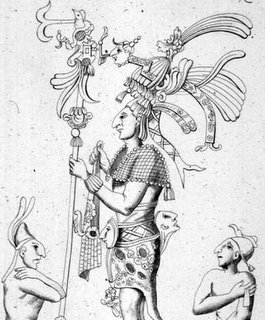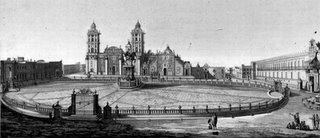"I shall," he wrote before leaving the European continent, "collect plants and fossils and make astronomic observations. But that is not the main purpose of my expedition. I shall try to find out how the forces of nature interact upon one another and how the geographic environment influences plant and animal life. In other words, I must find out about the unity of nature."
Prussian naturalist and überscientist, Alexander von Humboldt (1769-1859) developed an interest in collecting specimens from the natural world from a young age. Despite studying commerce, he maintained his childhood interests and embarked on a number of european tours and experimental undertakings in the fields of geology, botany and anatomy, which gave rise to his first publications.
Wanderlust, combined with his intuitive scientific curiosity took him to South America in 1799, where he was priviliged by the Spanish authorities to be allowed to tour through the continent for 5 years. During this time (in company with Aimé Jacques Alexandre Bonpland) he collected 60,000 natural specimens, created isothermal lines for use in cartography, discovered altitude sickness was caused by lack of oxygen, observed the preparation of curare, made observations that contributed to the founding of meteorology, noted the significance of preserving the overharvested antimalarial chinchona plants, recorded his observations of the Aztec world and mapped and discovered for the first time many geographical features (among many many other things).
He returned to Europe via USA where he was received by President Jefferson. [Humboldt was to be a great critic of slavery]. Back home in Germany, as one of the most famous people in Europe, he was a great promoter of scientific study, encouraging and supporting many protogés. [He would be an inspiration to Charles Darwin] He published his findings from South America in a large number of volumes issued over 21 years. Later in life he undertook another vast exploration - this time in Russia and Siberia and he eventually published his famed Kosmos, his unfinished, but greatly lauded (still) treatise that attempted to unify all natural world knowledge.
- Pittoreske Ansichten der Cordilleren und Monumente americanischer Völker was published in 1810 and all 22 plates are online at Kurt Stübers library.[In german]
- The Alexander von Humboldt Project. [There is a lot in there]
- The Alexander von Humboldt Foundation.
- Exhibition on Alexander von Humboldt at Ewell Sale Stewart Library at the Academy of Natural Sciences.
































































6 comments :
He went to Venezuela (my country) with Aimee Bompland
http://humboldtslife.blogspot.ru/
Thanks Natasha -- Humboldtslife is blog in Russian (translation) dedicated to the life and works of the amazing Alexander von Humboldt.
Hi, I would like to use the image View Gran Plaza in Mexico, for a video project, where can I get permission to use? best regards!
The image comes from here and you need to contact the site owner, Kurt Stüber.
(But the publication is from 1810, so it is almost certainly in the public domain, but Germany has some esoteric elements attached to legacy rights. For instance, when I published a book some years ago, I discovered that there is a usage charge from some or all material owned by the government, if you wish to republish such work. I can't offer advice in the present case other than to wonder if the book was published in USA, in which case free usage, because of the age of the item, would apply. Good luck.
Thanks for everything, regards.
Post a Comment
Comments are all moderated so don't waste your time spamming: they will never show up.
If you include ANY links that aren't pertinent to the blog post or discussion they will be deleted and a rash will break out in your underwear.
Also: please play the ball and not the person.
Note: only a member of this blog may post a comment.